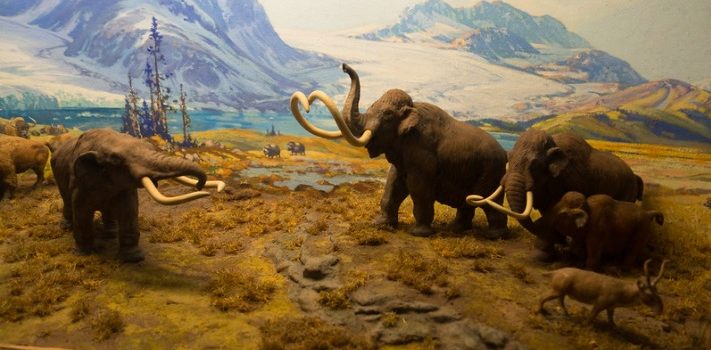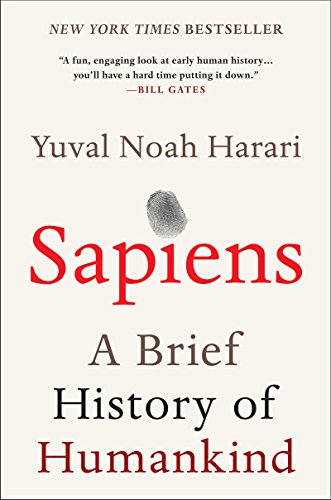

This article is an excerpt from the Shortform summary of "Sapiens: A Brief History of Humankind" by Yuval Noah Harari. Shortform has the world's best summaries of books you should be reading.
Like this article? Sign up for a free trial here .
What was the Pleistocene extinction? Why was it one of the biggest animal extinctions caused by humans in history?
The Pleistocene extinction was the event in which many large mammals about 45,000 years ago. According to the Pleistocene overkill hypothesis, this mass extinction was caused by human migration to previously uninhabited areas of the world.
We’ll cover what kinds of animals went extinct during the Pleistocene extinction and how humans became history’s most egregious serial killers.
Pleistocene Extinction
Before the Cognitive Revolution, humans lived solely on the landmass of Afro-Asia and a few surrounding islands. They didn’t alter these environments and ecosystems dramatically. Animals on the African and Asia continents had evolved alongside humans and knew how to avoid them and hold their own.
But as humans migrated to other parts of the world, parts wholly unprepared to face the threat of human beings, this would change. This chapter looks at the ecological impact of human migration to Australia, America, and then the rest of the world. This would lead to the Pleistocene extinction, animal extinction caused by humans.
Australia and the Pleistocene Overkill Hypothesis
It was in Australia that Sapiens rose to the top of the food chain and became the deadliest species in Earth’s history. This was the start of the Pleistocene extinction.
Before the arrival of humans, Australia was home to many large animals that sound mythical to modern ears. They included:
- A kangaroo that was six feet tall and weighed 450 pounds
- Seven-foot long snakes
- A marsupial lion
- Flightless birds that were twice as big as ostriches
In just a few thousand years, all of these animals, and many more, were gone. 23 out of the 24 animals weighing 100 or more pounds became extinct.
What Caused the Pleistocene Extinction?
Some researchers blame the Pleistocene extinction on the climate, but this is a weak argument for three reasons.
Reason #1: Australia’s climate did change 45,000 years ago, when humans came to Australia, but the climate changes all the time, and this particular change wasn’t especially dramatic. Is it a coincidence that 90% of the large animals in Australia vanished right after humans arrived? The giant diprotodon, for example, had survived at least ten ice ages before humans came.
Reason #2: Climate change usually affects land and sea creatures equally. But 45,000 years ago, when humans spent far more time on land that navigating the sea, only land animals were affected.
Reason #3: It wasn’t just Australia. Wherever humans went, they left a trail of extinction behind. For example, Sapiens only reached New Zealand about 800 years ago. Within a couple hundred years, most of the local megafauna was gone, as was 60% of local bird species. There are numerous examples like this, making Sapiens in particular “look like an ecological serial killer.”
Pleistocene Overkill Hypothesis
How Could Humans Cause Such an Ecological Catastrophe?
Reason #1: Although large, these Australian species weren’t hard for humans to kill.
One reason humans caused the Pleistocene extinction was that these species were easy targets. Large animals have long pregnancies and don’t have as many children as smaller species, so they breed slowly. Even if humans only killed a few diprotodons every year, deaths could outnumber births, causing the species’ extinction within a few thousand years.
Also, because large animals had no prior experience with humans, and because humans were small and didn’t look particularly menacing, these animals didn’t run away. They didn’t have time to evolve a fear of humans. Humans caught them off guard.
Reason #2: Humans used fire agriculture.
Fire was another reason humans caused the Pleistocene extinction. Humans burned dense thickets to create grasslands that were easy to navigate and attracted game. Not only did this lure animals into the vicinity to be killed, it changed the vegetation. This, in turn, impacted the animals who ate the vegetation, and the animals that ate those animals. This caused the food chain to collapse.
Reason #3: Human actions may have pushed an ecosystem weakened by climate change over the edge.
Climate change may have played a part. Large animals were vulnerable to two very different threats. Regardless, humans played a crucial role. Animals may have bounced back from climate change, but humans didn’t give them a chance.
Human-Caused Extinction in America
The disaster in Australia 45,000 years ago was the first mass extinction caused by humans, but it wasn’t the largest. The next major disaster was in America, 16,000 years ago.
Sapiens were the only humans to make it to America. They came in large numbers from Siberia, when the end of an ice age revealed a land bridge between Siberia and Alaska. Sapiens likely followed large prey like reindeer and mammoths into Alaska. Both were great sources of fat and fur, and hunters thrived.
The Largest Mass Extinction
Again, wherever humans went, they brought the powers of mass extinction with them. Animals native to North America included:
- Mastodons
- Camels
- Rodents as big as bears
- Lions
- Sloths 20-feet tall and weighing eight tons.
Shortly after Sapiens arrived, these species were gone. Of 47 large animal genera in North America, 34 went extinct. Of 60 large animal genera in South America, 50 went extinct. Thousands of smaller animal species also went extinct.
Human-Caused Extinction in The Rest of the World
The pattern seen in Australia and America repeated itself all over the world. Between the Cognitive and Agricultural Revolutions, humans caused half of the world’s large beasts to go extinct. And this pattern holds beyond the Agricultural Revolution. For example, Sapiens only set foot for the first time in Madagascar 1,500 years ago. Not coincidentally, this is also the time that most of Madagascar’s large animals disappeared.
Only a few islands, like the Galapagos Islands, were spared, but only because they were so remote that humans didn’t reach them until the modern age.
The mass extinction following the Cognitive Revolution is called the First Wave Extinction. After the Agricultural Revolution came the Second Wave Extinction. We’re now experiencing the Third Wave Extinction. All three waves are caused by humans.
Unless we as a species make massive changes, whales, sharks, and dolphins will probably follow the diprotodons, ground sloths, and mammoths into the abyss. We’re heading toward a repeat of the Pleistocene extinction.
———End of Preview———

Like what you just read? Read the rest of the world's best summary of "Sapiens" at Shortform . Learn the book's critical concepts in 20 minutes or less .
Here's what you'll find in our full Sapiens summary :
- How Sapiens outlived and outlasted the 8+ other human-like species on Earth
- The 3 critical revolutions in human existence that led to our domination of the planet
- How much of what powers our world today is really just a shared mass delusion
- What the future of humanity might look like






